Related Research Articles

Boyle Travers Finniss was the first premier of South Australia, serving from 24 October 1856 to 20 August 1857.
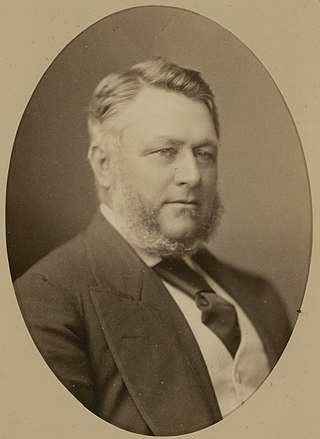
Sir Henry Ayers was the eighth Premier of South Australia, serving a record five times between 1863 and 1873.
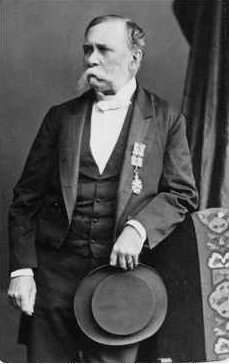
Francis Stacker Dutton CMG was the seventh Premier of South Australia, serving twice, firstly in 1863 and again in 1865.
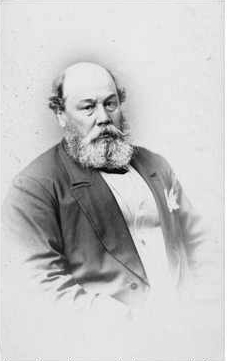
Sir Arthur Blyth was Premier of South Australia three times; 1864–65, 1871–72 and 1873–75.

Richard Bullock Andrews was an Australian politician and judge.
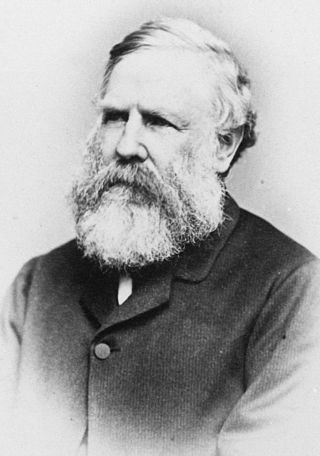
Captain John Hart CMG was a South Australian politician and a Premier of South Australia.

Henry Bull Templar Strangways was an Australian politician and Premier of South Australia.
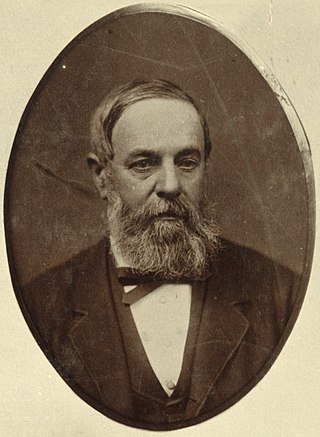
William Edward Everard was a South Australian businessman and politician.

Charles Hervey Bagot, often referred to as "Captain Bagot", was an Irish-born South Australian pastoralist, mine owner and parliamentarian, and was the ancestor of a number of notable South Australian citizens.

Lavington Glyde was a Treasurer of South Australia.
This is a list of members of the South Australian Legislative Council from 1881 to 1885.
The Second Reynolds Ministry was the 6th Ministry of the Government of South Australia, led by Thomas Reynolds. It commenced on 20 May 1861, when Reynolds succeeded in reconstituting his ministry and retaining power after the defeat of the First Reynolds Ministry. The ministry resigned in October 1861 when Reynolds was unable to reconstruct a ministry following the resignation of John Morphett as Chief Secretary. It was succeeded by the First Waterhouse Ministry, which was specifically constructed as a short-term ministry to deal with the matter of dissident Judge Benjamin Boothby, on 8 October.
The First Waterhouse Ministry was the 7th Ministry of the Government of South Australia, led by George Waterhouse. It commenced on 8 October 1861 as a short-term government solely for the purpose of dealing with an attempt to remove dissident judge Benjamin Boothby. As Henry Strangways refused to serve in the ministry, an Attorney-General was appointed from outside parliament, which the Constitution allowed for a period of up to three months. The ministry resigned following the passage of a motion to remove Boothby, but Waterhouse was successful in gaining support to form an ongoing government, which was sworn in on 17 October as the Second Waterhouse Ministry.
The Second Waterhouse Ministry was the 8th Ministry of the Government of South Australia, led by George Waterhouse. It commenced on 17 October 1861, when George Waterhouse, who had led a nine-day temporary ministry to deal with dissident judge Benjamin Boothby, won support to remain Premier with a reconstituted ministry. The ministry resigned in July 1863 after nearly being defeated on a budget motion, passing only with the Speaker's casting vote on a procedural basis. It was succeeded on 4 July by the First Dutton Ministry, another temporary ministry headed by Francis Dutton, who had moved the vote to bring down the Waterhouse ministry.
The First Ayers Ministry was the 10th Ministry of the Government of South Australia, led by Henry Ayers. It commenced on 15 July 1863, when Ayers won support to form a ministry after the collapse of the First Dutton Ministry. In July 1864, the ministry was defeated on a motion of no confidence, but his opponents were unable to form government, and Ayers was sworn in heading the reconstituted Second Ayers Ministry on 22 July 1864.
The Second Ayers Ministry was the 11th Ministry of the Government of South Australia, led by Henry Ayers. It commenced on 22 July 1864, when Ayers succeeded in reconstituting his ministry following its defeat on a no-confidence motion. It collapsed within days when both the new ministers, William Milne and Randolph Isham Stow, resigned, necessitating the resignation of the entire ministry. It was succeeded on 4 August 1864 by the First Blyth Ministry.
The First Blyth Ministry was the 12th Ministry of the Government of South Australia, led by Arthur Blyth. It commenced on 4 August 1864, when Blyth succeeded in forming a ministry following the resignation of the Second Ayers Ministry. It was succeeded by the Second Dutton Ministry on 22 March 1865, when Francis Dutton won the support of the new parliament that had been elected at the 1865 election.
South Australia Colonial elections were held in South Australia from 10 February to 1 March 1875. All 46 seats in the South Australian House of Assembly were up for election.
Colonial elections were held in South Australia from 6 April to 7 May 1868. All 36 seats in the South Australian House of Assembly were up for election.
Colonial elections were held in South Australia from 20 February to 13 March 1865. All 36 seats in the South Australian House of Assembly were up for election.
References
- ↑ "Statistical Record of the Legislature, 1836-2009" (PDF). Parliament of South Australia. Archived from the original (PDF) on 11 March 2019. Retrieved 8 October 2015.
- ↑ "THE MINISTRY". Adelaide Observer . 19 October 1861. p. 5. Retrieved 8 October 2015– via National Library of Australia.
- ↑ "Latest Intelligence". The Newcastle Chronicle and Hunter River District News . NSW. 8 July 1863. p. 4. Retrieved 8 October 2015– via National Library of Australia.
- ↑ "ADELAIDE". Bendigo Advertiser . Vic. 2 July 1863. p. 2. Retrieved 8 October 2015– via National Library of Australia.
- ↑ "RESIGNATION OF THE MINISTRY". South Australian Register . Adelaide. 9 July 1863. p. 2. Retrieved 8 October 2015– via National Library of Australia.
- ↑ "SOUTH AUSTRALIA". The Cornwall Chronicle . Launceston, Tas. 22 July 1863. p. 5. Retrieved 8 October 2015– via National Library of Australia.